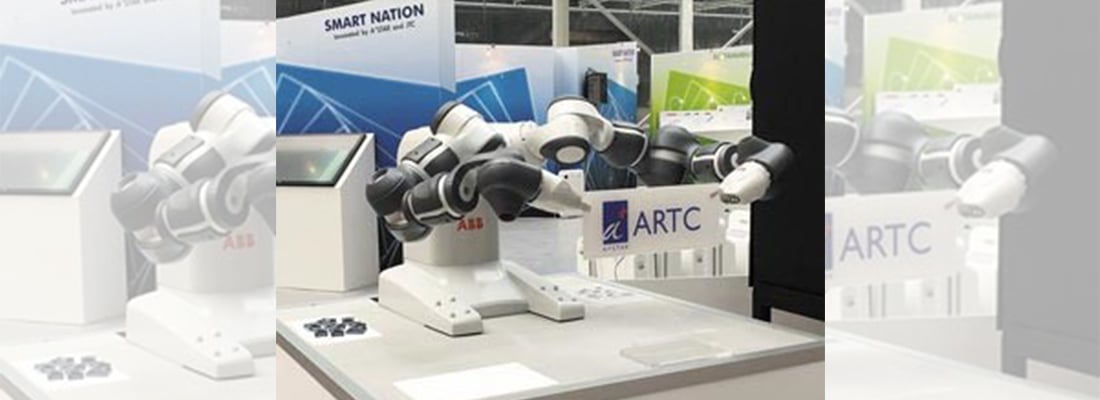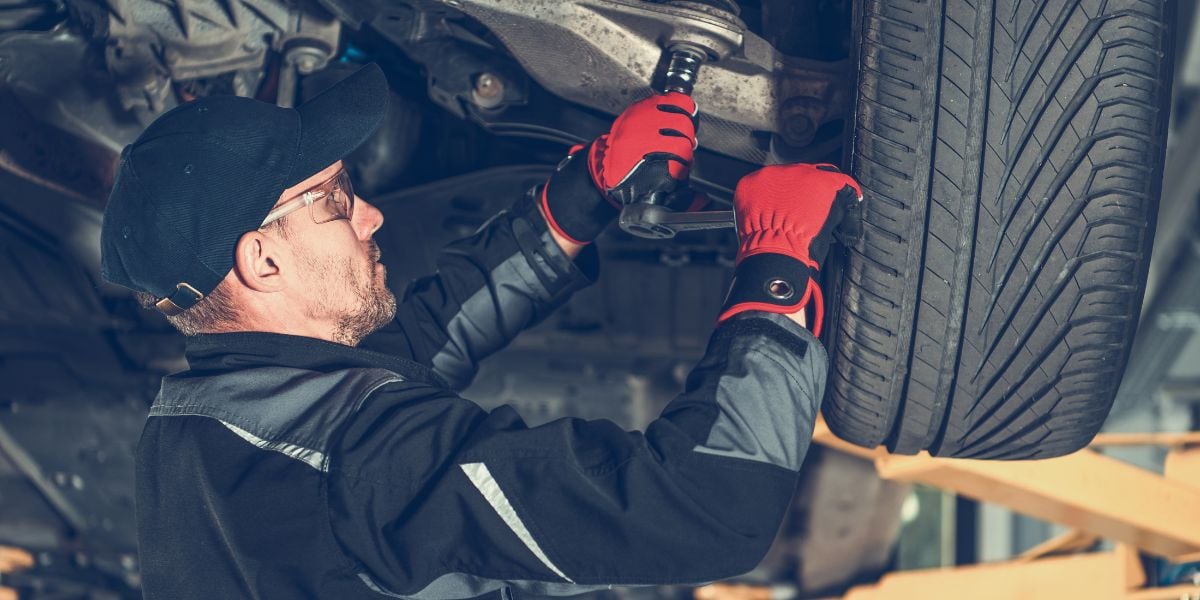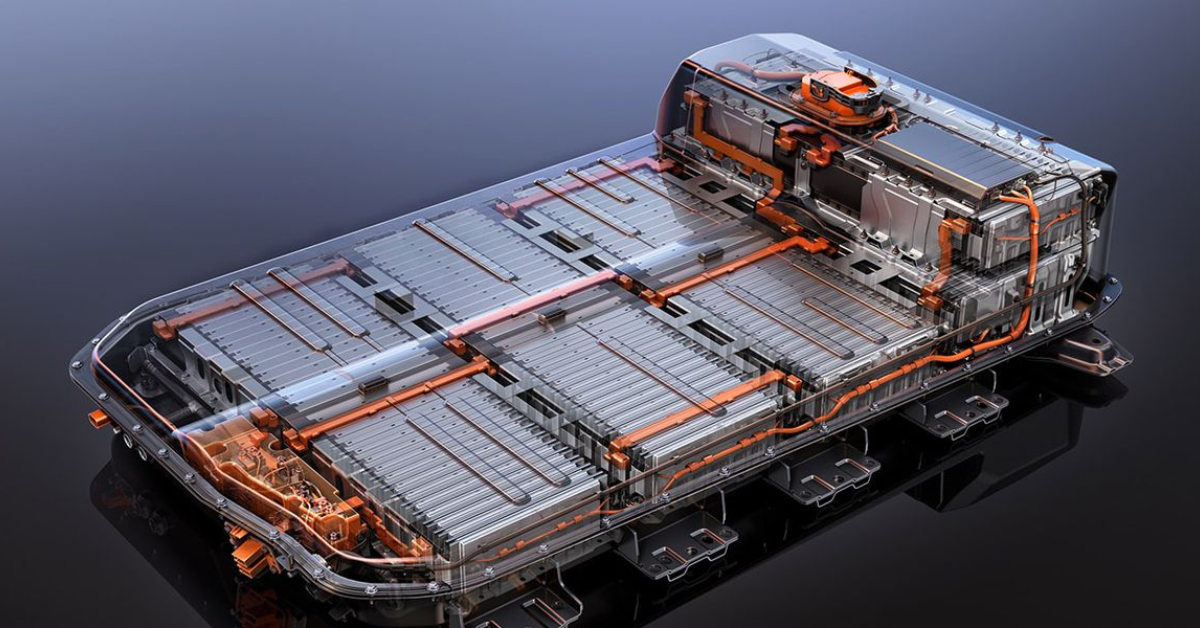‘Human-friendly’ robots
A new class of collaborative robots may be the future of industrial remanufacturing is emerging.
By 2030 more than half of the world’s jobs could be performed by machines. But far from a dystopian vision of humans being forced from employment by the rise of the machines, Tijo Thayil, section manager for robotics development at the A*STAR Advanced Remanufacturing and Technology Centre, believes this labor shift could be a positive development.
“There are some boring tasks which are done by a human operator — just assembling the same things every day, seven days a week,” he says. These rote, repetitive tasks could be easily passed on to robots, freeing up human operators for more interesting duties.
Thayil emphasizes that there is still a role for humans in this automated future, and his work focuses on developing a new kind of collaborative approach between robots and humans for manufacturing tasks. The robots are described as “human-friendly”.
“The previous thinking was that in the future, when we are using a fully automated production line, humans will be replaced,” says Thayil. “But now we are thinking of the robot acting more as an assistant.”
His vision of the future sees man and machine working side by side, assisting each other in the tasks the other struggles to perform.
“We still need the intelligence and perception of the human to identify the appropriate tasks, and if the task is something that is repeated, it can be taken up by the robot.”
Thayil says this new generation of robots can be programmed to perform new and varied tasks in a simple physical manner.
“You can teach a robot by demonstration. So the person has to show once how it has to be done and then after that the robot can repeat the task.”
Good as new
The biggest advantage of this collaborative class of robots, is that unlike their dumber ancestors, the new generation can respond to stimuli and learn as they go. This is particularly important in remanufacturing, which the center specializes in.
With remanufacturing, a machine part — perhaps from an aircraft engine or mining truck engine — is restored as good as new through an industrial process — potentially using the kinds of robots that Thayil works on.
Andrew Soutar is the director of project management and research liaison at the ARTC. He says that although the concept of repair is as old as time, remanufacturing is a bright new direction for industry.
“The remanufacturing processing may involve first machining out damaged areas. Then an additive manufacturing process is carried out — so you would add material back to the component to bring it back to close to its optimum intended geometry. After that you need to carry out some final machining and then surface finishing processes to ensure that you have the required surface roughness,” says Soutar.
Soutar says one of the selling points of remanufacturing is that a remanufactured engine is provided with an as-new warranty, whereas a repaired engine is not. There are also significant economic and environmental benefits.
“If you’re looking at the circular economy and sustainability then the cost of materials will be significantly lower for a remanufactured component than for a new component,” notes Soutar. As processing costs, such as energy and water, to repair a component are significantly lower than those required to make a new component from scratch, economic benefits can be passed on to the consumer.
Robotic Repair
Thayil says the ability of the robots to respond specifically to each component is essential for automated remanufacturing.
“When you produce a new part, we have the Computer Aided Design or ‘CAD’ file and we know the shape exactly, everything is defined — you can move the tool according to the CAD file.
In repair and remanufacturing processes, however, the input part’s shape or geometry is different each time. When it comes out of service we don’t know how it will look. And now, with advancements in robotics, combined with the latest technologies such as vision modules and 3D scanning systems, robots can be tuned to respond according to the variations in input condition.”
This flexibility and adaptability also means that robots can now be put to work on smaller batches, with high mix, low volume manufacturing, opening up automation for smaller manufacturers.
And in an industry that spends millions tooling up the production line, collaborative robots offer the prospect of nimbler and more responsive manufacturing.
“If you develop an automation system for a dedicated application, it is only for that application. But if the robot is flexible, then tomorrow, if the components change, we can simply reprogram the robot to be used for the new component,” says Thayil.
Soutar says the center has the particular ability to take good ideas and make them commercial reality. They focus on what is known as the ‘mid Technology Readiness Level range’ — classified as components that have been tested in the lab, relevant environments and the operational environment — “It’s commonly called the Valley of Death”.
“Many technologies come out of the universities, but, at the end of the day, not many of them get implemented in companies and that’s often because of gaps in expertise in regards to developing the technologies, expertise in handling the process equipment, the availability of the process equipment and the other aspect may be the supply chain,” says Soutar.
ARTC’s industry partners, on the other hand, benefit from the center’s significant experience in translating the results of R&D work to shop-floor application and Thayil says partners are excited about the promise of robotized production.
“You can use robots 24/7 — they don’t need a lunch or coffee break. Humans, on the other hand, can get tired or bored, mainly because they’re repeating a task that’s easy for them. Now the repetitious task can be taken up by the robot.
“For countries like Singapore it is not easy to get skilled labor — the younger generation want to do more value-added tasks. So if they are asked to use their intelligence and perception to add value to rote tasks performed by a robot, they will be happier.”
About the Advanced Remanufacturing and Technology Centre
The ARTC is a platform built upon strong partnerships across the supply chain: complemented by technical support from research institutes and academia. The first center in Asia within the network of Advanced Research Centres (known as AxRCs), ARTC is headed by a capable core team. With a purpose built facility, underpinned by world class research expertise at A*STAR and NTU to rapidly create solutions and bring these technologies into industrial production capabilities to the benefit of all its stakeholders.
Share your remanufacturing stories with us
Do you have an innovation, research results or an other interesting topic you would like to share with the remanufacturing industry? The Rematec website and social media channels are a great platform to showcase your stories!
Please contact our Brand Marketing Manager.
Are you an Rematec exhibitor?
Make sure you add your latest press releases to your Company Profile in the Exhibitor Portal for free exposure.



